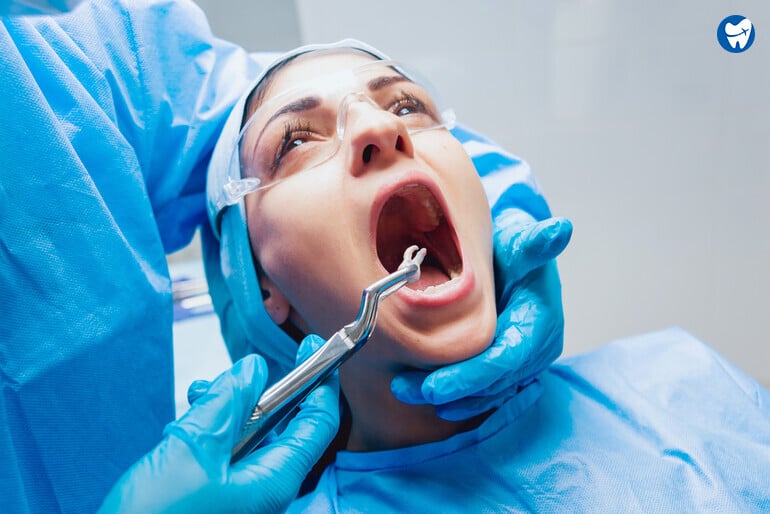Proper wound care after extraction is pivotal in post-extraction success. However, not many know the correct extraction aftercare. But why worry? We can help you!

Extraction Aftercare
Extraction is a routinely done dental procedure. It involves removing a tooth from its housing in the bone tissue of the mouth. [1]
Continue reading to know more!
Tooth Extraction Overview
Tooth extraction is broadly indicated in [2]
- Caries (severe)
- Gum and bone disease (extensive)
Other situations: Loose tooth, bone-encased tooth, infections, orthodontic treatment
Video Courtesy: Dental Case Videos
Extractions could either be simple or surgical (involving a wisdom tooth). [3]
Although it is vital to consider wound care after extraction in both cases, surgical extractions require more attention.
Instructions After Tooth Extraction
Extraction aftercare is critical for both the dentist and patient. Enlisted below are some simple ways of achieving it.
After a routine tooth extraction procedure, your dentist will
- Pack a gauze piece into the socket from where the teeth were pulled.
- He/she will ask you to bite down on it for a specific duration as that will help stop bleeding.
- Sometimes a few stitches may also be required to close the soft tissue gums to promote healing.
You shall then be sent home for the recovery phase. Additionally, painkillers will be prescribed.
- Follow the doctor’s recommendations to keep gauze over the extraction area for the specified time
- For immediate 24 hours, avoid spitting, poking, rinsing, or blowing. Avoid strenuous exercise.
- Avoid eating hot or spicy foods for the next 1-2 days. Only a soft or liquid diet is advised.
- Stop smoking or any alcohol consumption atleast for 24 hours.
- Do not chew or sleep on the side of the extraction wound.
- Keep the extraction area hygienic using an antiseptic mouth rinse after the first 24 hours.
- Take the prescribed medications and report any severe bleeding, pain, or abnormal finding to your dentist.
Source: National Health Service [4]
It must be kept in mind that these are general precautions.
Post-Wisdom Teeth Removal Care
These also follow the same guidelines as above.
However, a third molar extraction may need extra care.
Stitches given may be prone to becoming an infected site.
In case of severe pain, non-aggressive warm salt water rinses after tooth extraction can also be done.
This will help relieve pain and swelling.
Common Concerns & Complications
Failure to comply with the care instructions may cause interference in the healing process.
This can result in some serious complications like: [5]
- Ulcers: Use over-the-counter topical anesthetic gel.
- Trismus (restricted mouth opening): Massage and heat therapy.
- Swelling: Click here to learn how to control swelling after extraction.
- Excessive bleeding: Bite down on a clean gauze or cloth piece and call your dentist immediately.
- Dry Socket (blood clot dislodgement causing severe pain within 3-5 days of extraction): Get a medicated dressing done in your socket.
What To Eat After Tooth Extraction?
In the initial 24 hours, it is wise to consume only soft foods or liquids as this will prevent the blood clot from displacing. [6]
These include milkshakes, smoothies, oatmeal, and mashed banana, amongst others.
Also, try to avoid chewy or sticky food.
Takeaway
Meticulously followed wound care after an extraction will keep you away from infections and promote healing.
However, in an event of any abnormal finding, be sure to consult with your dentist immediately.
FAQs
Some sources recommend using a tea bag or a folded paper towel instead of gauze in the extraction region. [7]
However, it is not advisable to do so as it may increase the risks of infection.
But you can use a clean, sterile soft cloth piece over the region.
Remember that it is only a temporary means of stopping bleeding until you reach the dentist’s office.
Gauze does not usually remove or displace the blood clot.
However, in cases of dry mouth, it can be difficult to remove the gauze after the instructed time period. [8]
In such an event, it is suggested to drink a few sips of water.
This will moisten the gauze piece and help its retrieval.
Although healing time varies from person to person, a week to ten days is usually required in most people. [9]

